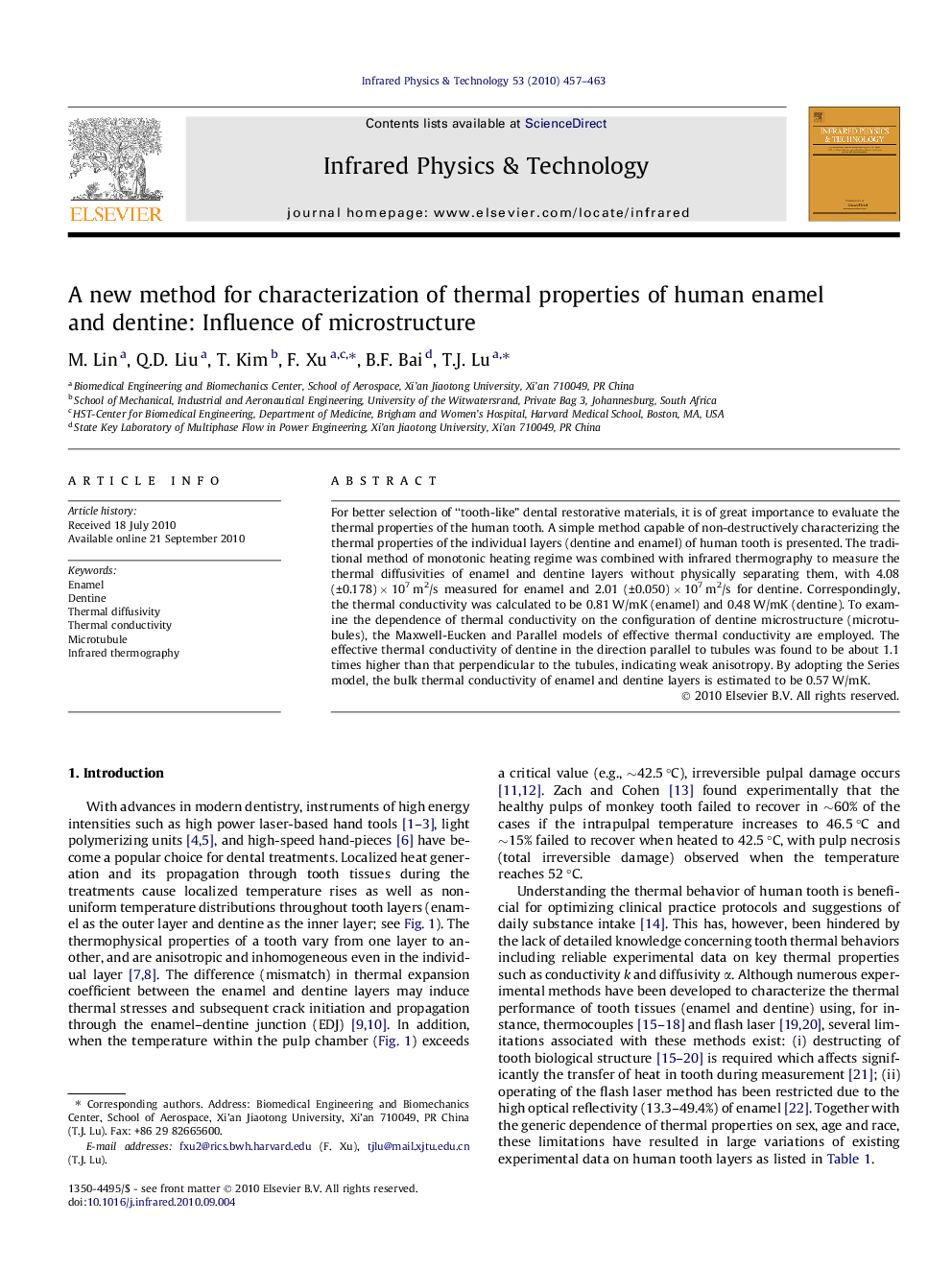| Article ID | Journal | Published Year | Pages | File Type |
|---|---|---|---|---|
| 1784626 | Infrared Physics & Technology | 2010 | 7 Pages |
For better selection of “tooth-like” dental restorative materials, it is of great importance to evaluate the thermal properties of the human tooth. A simple method capable of non-destructively characterizing the thermal properties of the individual layers (dentine and enamel) of human tooth is presented. The traditional method of monotonic heating regime was combined with infrared thermography to measure the thermal diffusivities of enamel and dentine layers without physically separating them, with 4.08 (±0.178) × 107 m2/s measured for enamel and 2.01 (±0.050) × 107 m2/s for dentine. Correspondingly, the thermal conductivity was calculated to be 0.81 W/mK (enamel) and 0.48 W/mK (dentine). To examine the dependence of thermal conductivity on the configuration of dentine microstructure (microtubules), the Maxwell-Eucken and Parallel models of effective thermal conductivity are employed. The effective thermal conductivity of dentine in the direction parallel to tubules was found to be about 1.1 times higher than that perpendicular to the tubules, indicating weak anisotropy. By adopting the Series model, the bulk thermal conductivity of enamel and dentine layers is estimated to be 0.57 W/mK.
